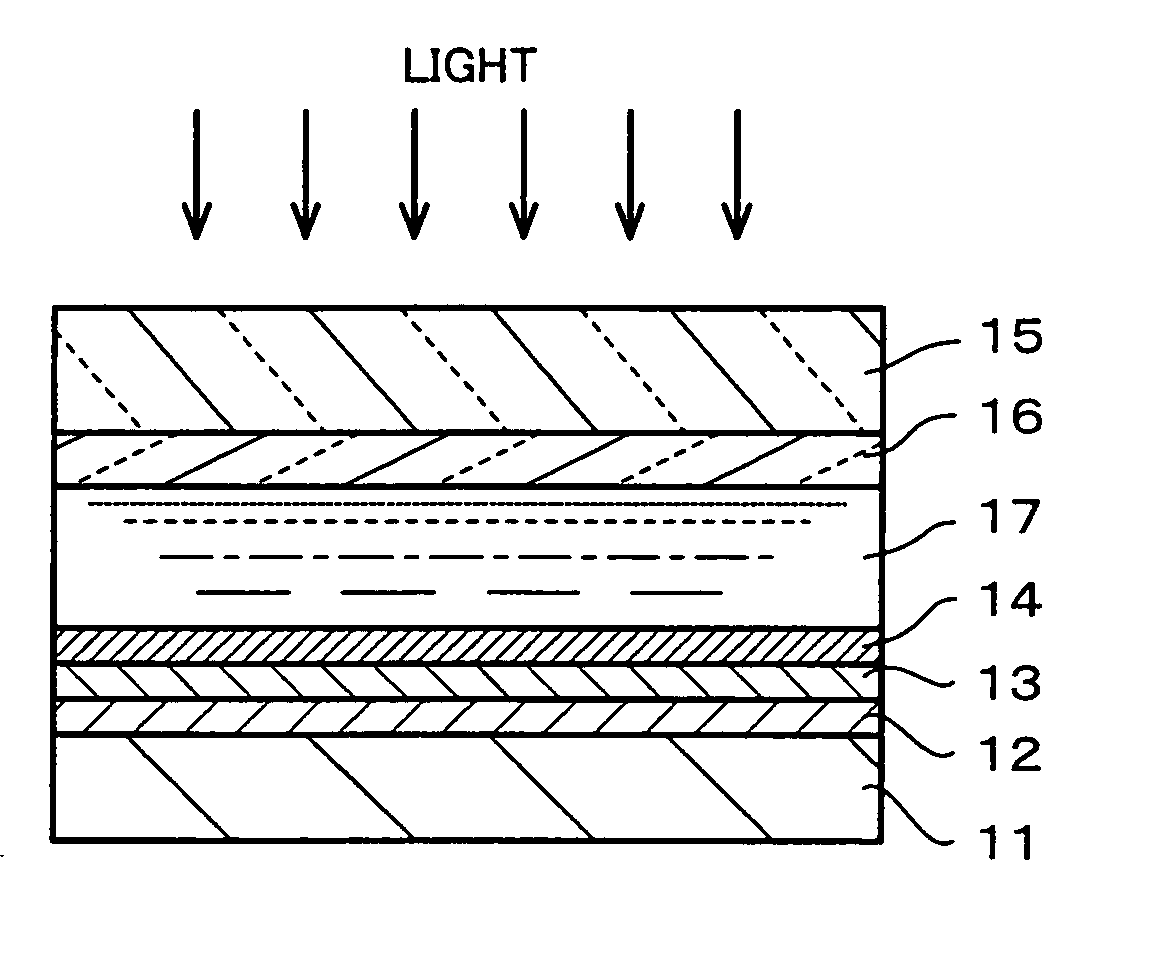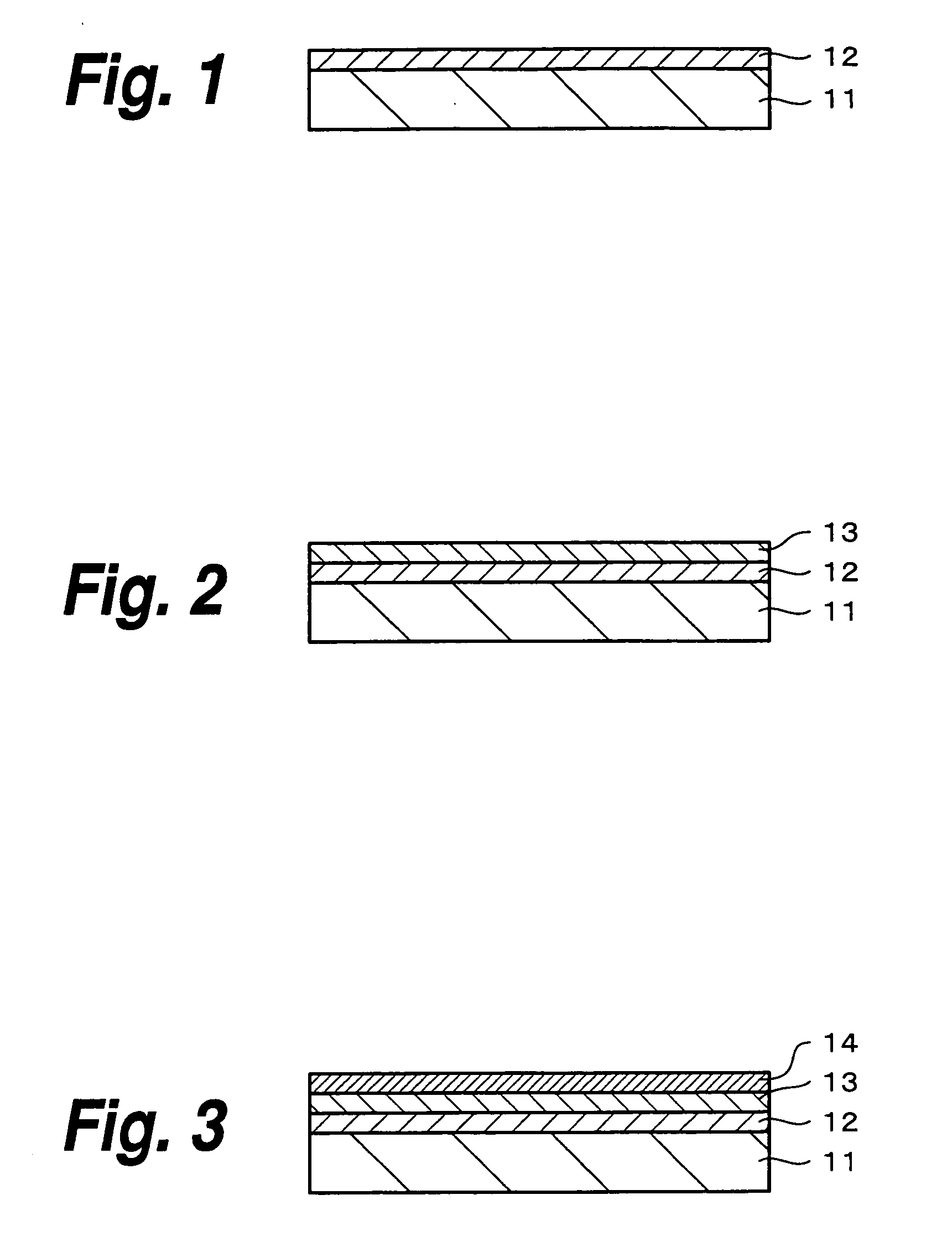Photoelectric conversion device fabrication method, photoelectric conversion device, electronic apparatus manufacturing method, electronic apparatus, metal film formation method and layer structure, and semiconductor fine particle layer and layer structure
a technology of photoelectric conversion device and fabrication method, which is applied in the direction of lighting and heating apparatus, heating types, and domestic stoves or ranges. it can solve the problems of productivity, the need for firing process is serious, and the polymer materials to be used for film electrodes cannot stand such a high temperature, so as to increase the protection function of intermediate films, improve the adhesion property, and reduce the film formation cost
- Summary
- Abstract
- Description
- Claims
- Application Information
AI Technical Summary
Benefits of technology
Problems solved by technology
Method used
Image
Examples
example 1
[0112] An example of a dye-sensitized wet type solar cell fabrication method will be described.
[0113] At first, as a transparent substrate 11 and transparent electrode 12, a polyethylene terephthalate (PET) film with 120 μm thickness and coated with an ITO film with a 300 nm thickness by vacuum deposition was made ready. The ITO-coated PET film was cut into 25 mm square size.
[0114] Next, the surface of the transparent electrode 12 of the ITO film was washed with pure water and then isopropanol under ultrasonic wave application for degreasing and dried in nitrogen current.
[0115] Next, an aqueous solution of 1.3 wt % of PEDOT / PSS was applied to the transparent electrode 12 of the ITO film by spin-coating at 3,000 rpm and dried on a hot plate heated to 120° C. to form a PEDOT / PSS film 13.
[0116] After that, a platinum film 14 was formed on the PEDOT / PSS film 13 by a sputtering method. The thickness of the platinum film 14 was adjusted to be 40 nm.
[0117] On the other hand, to a tita...
examples
[0133] Examples of dye-sensitized wet type solar cell fabrication methods will be described.
example 2
[0134] At first, as a transparent substrate 21 and transparent electrode 22, a polyethylene terephthalate (PET) film with 120 μm thickness and coated with an ITO film with a 300 nm thickness by vacuum deposition was made ready. The ITO-coated PET film had a sheet resistance of 10 to 30 Ω / □. The ITO-coated PET film was cut into 25 mm square size.
[0135] Next, the surface of the transparent electrode 22 of the ITO film was washed with pure water and then isopropanol under ultrasonic wave application for 15 minutes for degreasing and dried in nitrogen current.
[0136] Next, a PEDOT / PSS film 23 was formed on the transparent electrode 22, which was the ITO film, as follows. At first, the transparent substrate 21 coated with the transparent electrode 22, that is the ITO-coated PET film, was fixed on a glass substrate and being united with the glass substrate, the transparent substrate 21 was set in a spin coater. Next, an aqueous solution of 1.3 wt % of PEDOT / PSS was spread on the ITO-coat...
PUM
| Property | Measurement | Unit |
|---|---|---|
| Temperature | aaaaa | aaaaa |
| Temperature | aaaaa | aaaaa |
| Temperature | aaaaa | aaaaa |
Abstract
Description
Claims
Application Information
 Login to View More
Login to View More - R&D
- Intellectual Property
- Life Sciences
- Materials
- Tech Scout
- Unparalleled Data Quality
- Higher Quality Content
- 60% Fewer Hallucinations
Browse by: Latest US Patents, China's latest patents, Technical Efficacy Thesaurus, Application Domain, Technology Topic, Popular Technical Reports.
© 2025 PatSnap. All rights reserved.Legal|Privacy policy|Modern Slavery Act Transparency Statement|Sitemap|About US| Contact US: help@patsnap.com



